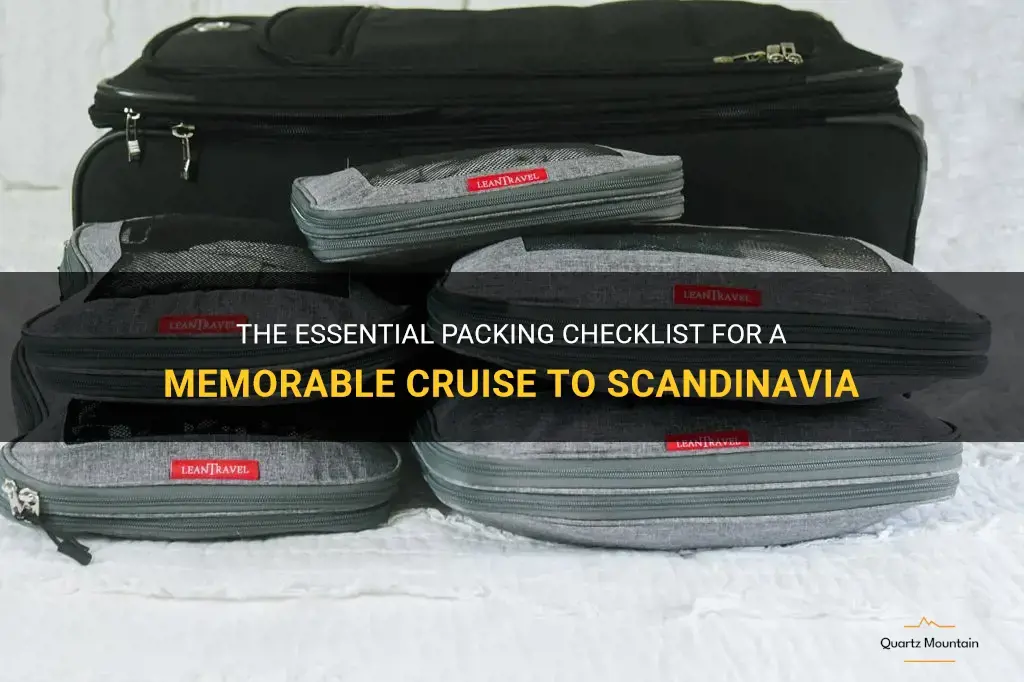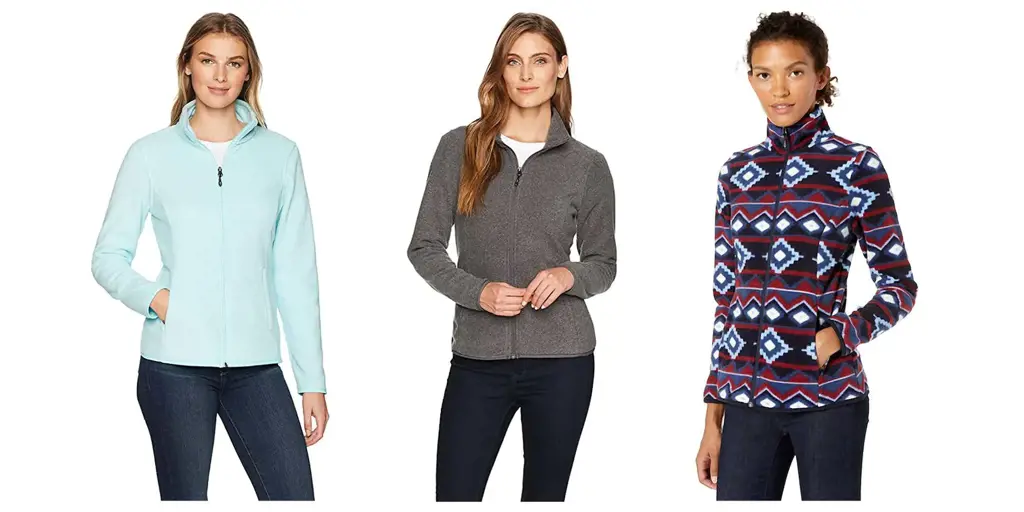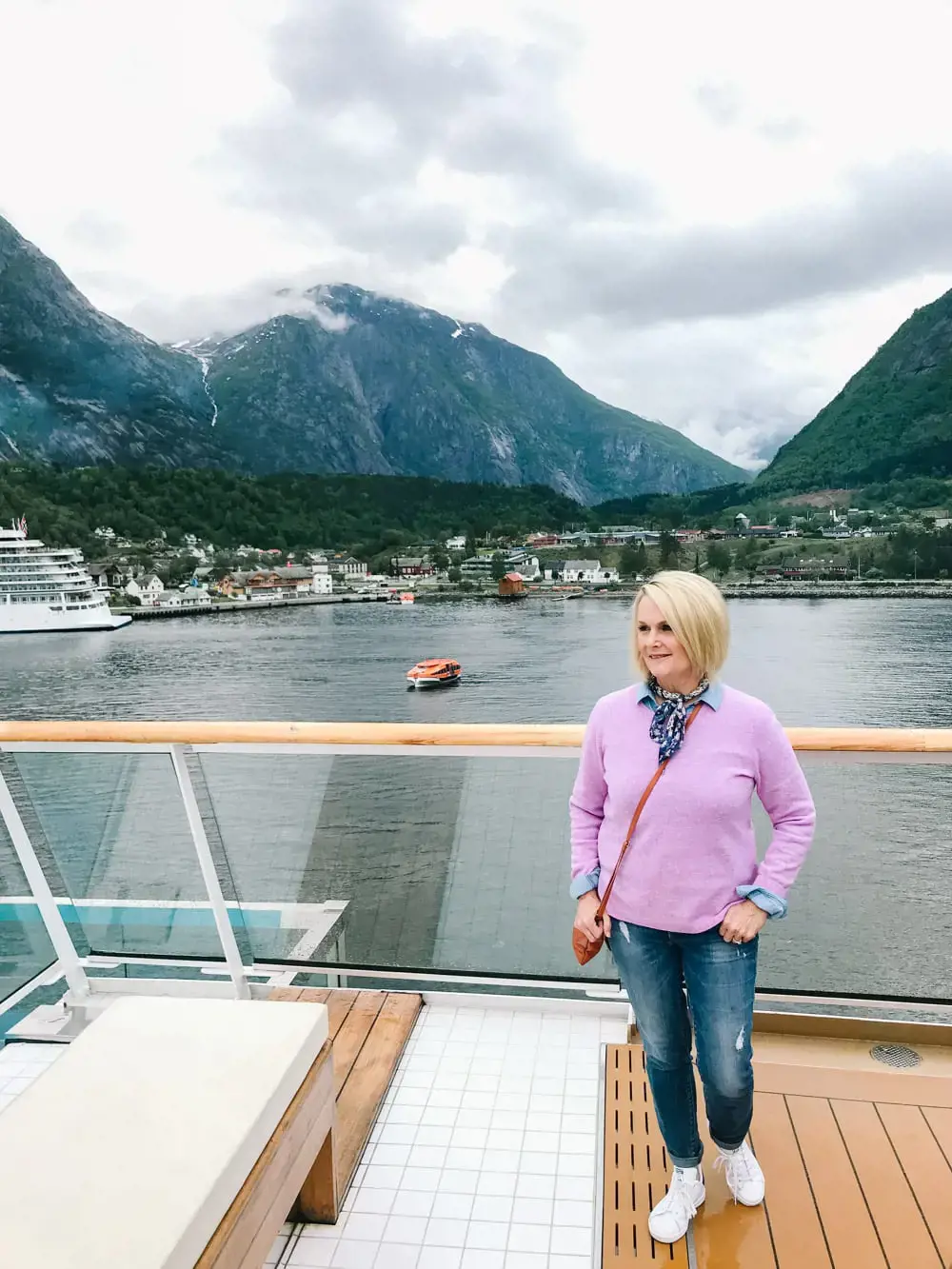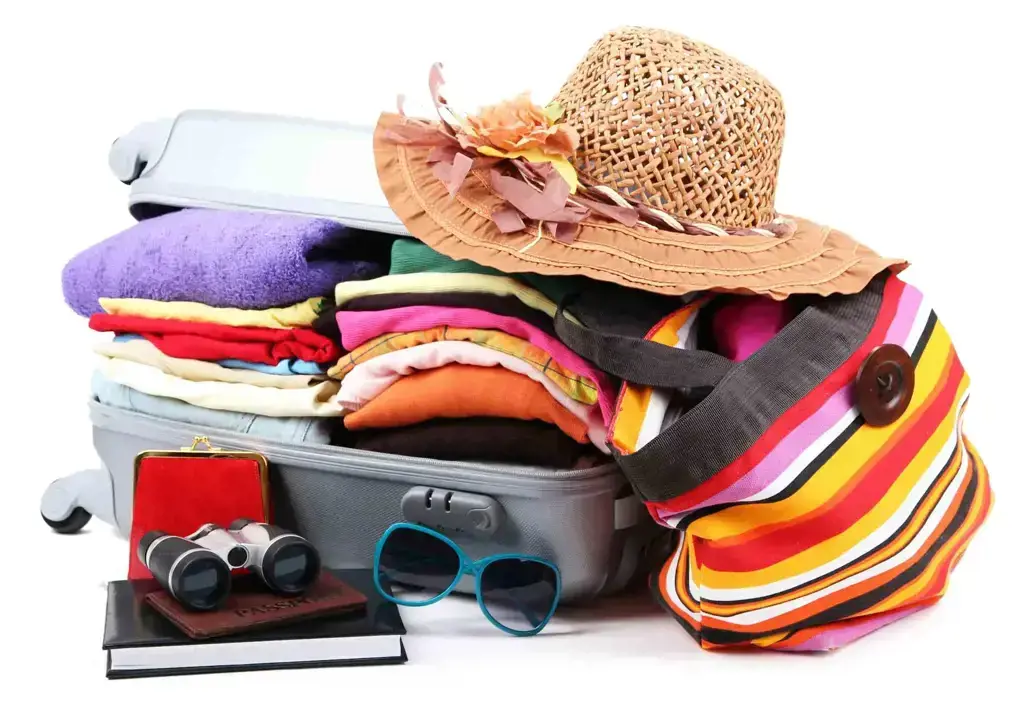
Are you planning a cruise to Scandinavia and want to make sure you have everything you need for a memorable voyage? Look no further than this essential packing checklist. From warm layers for the unpredictable Scandinavian weather to comfortable shoes for exploring the quaint waterfront towns, this checklist will ensure you are prepared for anything your cruise to Scandinavia throws at you. So, pack your bags and get ready for an unforgettable adventure through the stunning fjords, historic cities, and breathtaking landscapes of Scandinavia.
What You'll Learn
- What are the essential clothing items to pack for a cruise to Scandinavia?
- Are there any specific items I should bring to stay warm in the Scandinavian climate?
- Should I pack formal attire for any events or dinners on the cruise?
- Are there any specific accessories or equipment I should bring for activities on the cruise, such as hiking or wildlife watching?
- Are there any cultural considerations or dress codes I should be aware of when packing for a cruise to Scandinavia?

What are the essential clothing items to pack for a cruise to Scandinavia?

When embarking on a cruise to Scandinavia, it is important to pack the right clothing to ensure a comfortable and enjoyable trip. The region is known for its dynamic weather patterns, which can range from chilly temperatures to warm and sunny days. To make the most of your cruise experience, here are some essential clothing items to consider packing:
Layered Clothing:
Scandinavian weather can be unpredictable, so it is crucial to pack clothing that can be layered. This will allow you to adjust your outfit according to the temperature. Start with a base layer made of lightweight, moisture-wicking material to keep your body dry and comfortable. Add a mid-layer, such as a fleece or lightweight sweater, for insulation. Finally, bring a waterproof and windproof outer layer, such as a durable rain jacket, to protect against the elements.
Warm Hat, Gloves, and Scarf:
Even in the summer months, temperatures can drop in Scandinavia, especially during evening cruises or when visiting colder regions like Norway's Fjords. Packing a warm hat, gloves, and scarf will help keep you cozy and protect against wind chills. These items take up minimal space in your luggage but can provide significant warmth.
Comfortable Shoes:
Exploring the charming cities and natural wonders of Scandinavia usually involves a fair amount of walking. Therefore, it is crucial to bring comfortable shoes that you can walk in for extended periods without discomfort. Opt for waterproof shoes or boots, especially if you plan on visiting areas with a higher chance of rain or snow.
Swimwear:
While it may not be the first thing that comes to mind when thinking about Scandinavia, the region offers fantastic opportunities for hot tubs and saunas. Virtually all cruise ships will have these amenities, and many also have outdoor pools or hot tubs. Packing swimwear will allow you to relax and rejuvenate in these luxuries.
Daypack or Tote Bag:
Having a reliable daypack or tote bag is invaluable when going on shore excursions or exploring ports of call. This bag will serve as your go-to for carrying essentials such as a water bottle, camera, sunscreen, snacks, and a light jacket. Look for a bag that is comfortable to wear or carry and has enough space to accommodate your needs for the day.
By packing these essential clothing items, you will be well-prepared to address the diverse weather conditions of a cruise to Scandinavia. Remember to check the weather forecast before your journey and adjust your packing accordingly. With the right clothing, you can fully immerse yourself in the beauty and experiences that this stunning region has to offer.
Essential Items to Pack for a Family Trip to Cuba with Kids
You may want to see also

Are there any specific items I should bring to stay warm in the Scandinavian climate?

If you are planning a trip to Scandinavia, it is important to be prepared for the cold climate that you will encounter. The weather in this region can be extremely harsh, with temperatures dropping well below freezing during the winter months. To stay warm in these conditions, there are a few specific items that you should consider bringing with you.
One of the most important items to have in your winter wardrobe is a warm and insulated coat. Look for a coat that is made from a durable material, such as down or synthetic insulation, with a waterproof outer layer. This will help to keep you warm and dry, even in the harshest of conditions. Additionally, opt for a coat that has a high collar and a hood, as this will provide added protection for your neck and head.
Another essential item to bring is a good pair of insulated and waterproof boots. Scandinavia is known for its snow and ice, so it is important to have footwear that can handle these conditions. Look for boots with a thick sole and good traction, as this will help to prevent slips and falls on slippery surfaces. Additionally, make sure that the boots are insulated to keep your feet warm, and waterproof to keep them dry.
Layering is key when it comes to staying warm in the Scandinavian climate. Instead of relying on one heavy sweater, opt for multiple thinner layers that can be easily added or removed as needed. Start with a base layer made from a moisture-wicking material, such as merino wool or synthetic fabric. This will help to keep your body dry by moving sweat away from your skin. On top of the base layer, add a mid-layer made from a lightweight insulation material, such as fleece or down. Finally, top it off with a waterproof and windproof outer layer, such as a shell jacket.
Accessories are also important for staying warm in cold temperatures. A good pair of gloves or mittens is essential, as your hands are one of the first parts of your body to get cold. Look for gloves or mittens that are insulated and waterproof. Additionally, consider bringing a hat or headband to keep your head warm, as well as a scarf or neck gaiter to protect your neck from the cold winds.
Finally, don't forget about your legs! A good pair of thermal or woolen leggings can make a big difference in keeping you warm. Look for leggings that are specifically designed for cold weather, with thermal insulation and moisture-wicking properties.
In conclusion, staying warm in the Scandinavian climate requires some specific clothing items. A warm and insulated coat, waterproof boots, layered clothing, and accessories such as gloves, hats, and scarves are all essential for braving the cold temperatures. By coming prepared with these items, you can enjoy your time in Scandinavia without letting the cold weather get in the way.
Essential Items to Pack for Your Punta Cana Vacation
You may want to see also

Should I pack formal attire for any events or dinners on the cruise?

When it comes to packing for a cruise, one of the common questions that arises is whether or not to pack formal attire for any events or dinners onboard. While it ultimately depends on the specific cruise line and itinerary, there are some general guidelines that can help you make an informed decision.
Firstly, it's important to research and understand the dress code of the cruise line you'll be sailing with. Some cruise lines have more formal dress codes and may require you to dress up for certain events or dinners. This can include formal nights, where dressy attire such as suits or cocktail dresses are expected. Other cruise lines have more relaxed dress codes and may not require formal attire. By checking the cruise line's website or contacting their customer service, you can get a better understanding of their dress code policy.
Secondly, consider the itinerary and the type of cruise you'll be on. If you'll be sailing on a luxury or upscale cruise line, formal attire may be more common. These cruises often have elegant events and dinners that warrant dressing up. On the other hand, if you're on a more casual or adventure-oriented cruise, formal attire may not be necessary. It's also worth considering any special events or celebrations that may be taking place during your cruise. For example, if there's a gala dinner or a captain's cocktail party, it's likely that formal attire will be expected.
Even if formal attire is not required, some cruisers still choose to dress up for special events as a way to enhance the experience and feel more stylish. It can be enjoyable to put on a fancy outfit and participate in the elegance of a formal evening. Additionally, dressing up can provide you with great photo opportunities and memories to cherish from your cruise.
Before deciding whether or not to pack formal attire, it can be helpful to think about your own personal preferences and comfort level. Some cruisers enjoy dressing up and look forward to the chance to wear their formal attire, while others prefer a more relaxed and casual approach. Ultimately, it's your vacation, and you should pack what makes you feel most comfortable and confident.
If you do decide to pack formal attire, it's important to consider the practical aspects of packing. Formal clothing tends to take up more space and may require special care to avoid wrinkles. Packing garments that are versatile and can be mixed and matched with other items in your luggage can help you save space and ensure you have options for various events.
In conclusion, whether or not to pack formal attire for events or dinners on a cruise depends on the specific cruise line, the itinerary, and your personal preferences. Researching the dress code and considering the type of cruise you'll be on can help you make a decision. Ultimately, it's about finding a balance between being prepared for any formal occasions that may arise and packing what makes you feel comfortable and confident during your cruise.
Essential Items to Pack for Your Stay at BC Women's Hospital
You may want to see also

Are there any specific accessories or equipment I should bring for activities on the cruise, such as hiking or wildlife watching?

When preparing for a cruise, especially one that includes activities like hiking or wildlife watching, it's important to bring the right accessories and equipment to make the most of your experience. Here are some specific items you should consider packing for these types of activities.
- Hiking Boots: A sturdy pair of hiking boots is essential for any hiking excursion. Look for boots that provide good ankle support and have a nonslip sole. Make sure to break them in before your trip to avoid blisters and discomfort.
- Daypack: A small daypack is useful for carrying essentials during hikes or wildlife excursions. Make sure it has enough room to hold water, snacks, a camera, binoculars, and any other items you may need.
- Binoculars: Binoculars are a must-have for wildlife watching. Look for a lightweight pair with good magnification and lens quality. They will allow you to get a closer look at animals and appreciate their beauty from a distance.
- Water Bottle: Staying hydrated is crucial, especially during activities like hiking. Invest in a reusable water bottle that is easy to carry and can hold enough water to last you through your adventure. Look for options with insulation to keep your water cool.
- Sun Protection: Protecting yourself from the sun's harmful rays is important, especially if you are spending long hours outdoors. Bring sunscreen with a high SPF, a wide-brimmed hat, and sunglasses to shield your eyes. Consider choosing clothing with built-in sun protection as well.
- Insect Repellent: Depending on your destination, insects can be a nuisance during outdoor activities. To protect yourself from bites and potential diseases, bring a reliable insect repellent. Look for options with a high percentage of DEET or other effective ingredients.
- Rain Gear: Even if you are visiting a destination with a dry climate, it's always a good idea to pack rain gear. A small, lightweight rain jacket or poncho can protect you from unexpected showers or sudden changes in weather.
- Camera or Smartphone: To capture all the beautiful sights and encounters, bring a camera or smartphone with a good-quality camera. Consider investing in a waterproof case to protect your device during water activities or rainy weather.
- First Aid Kit: It's always better to be prepared for any unexpected situations. Pack a small first aid kit with essentials like bandages, pain relievers, antiseptic wipes, and any necessary medications. Also, carry any necessary medical supplies you may need, such as inhalers or EpiPens.
- Proper Clothing: Pack lightweight, breathable clothing suitable for the activities you'll be participating in. Bring comfortable hiking pants, moisture-wicking shirts, and dress in layers for variable weather conditions. Don't forget to include a swimsuit if you plan to take part in any water activities.
Remember, it's important to research the specific destination and activities you'll be participating in to ensure you bring suitable accessories and equipment. Check with the cruise line or tour operator for any specific recommendations or requirements. By being prepared and packing the right items, you can enhance your experience and make the most of your cruise activities like hiking and wildlife watching.
The Essential Food Packing Guide for Your Next Camping Trip
You may want to see also

Are there any cultural considerations or dress codes I should be aware of when packing for a cruise to Scandinavia?

When packing for a cruise to Scandinavia, it is important to consider the cultural norms and dress codes of the region. Scandinavia includes countries such as Norway, Sweden, and Denmark, each with its own cultural traditions and customs. Understanding these cultural considerations will not only help you pack appropriately but also show respect for the local culture.
Wardrobe Choices:
Scandinavia experiences a wide range of weather conditions throughout the year, so it is essential to pack clothing suitable for different seasons. During the summer months, temperatures can vary from mild to warm, so pack lightweight and breathable clothing such as t-shirts, shorts, and skirts. However, keep in mind that evenings can be cooler, so it is advisable to carry a light sweater or jacket.
In terms of fashion in Scandinavia, simplicity and practicality are key. Scandinavian style often encompasses minimalistic and functional designs. Opt for neutral colors such as black, white, and gray, and avoid loud patterns or flashy accessories. This understated style is not only fashionable but also aligns well with the minimalist ethos of the region.
Cultural Norms:
Scandinavian countries value equality, respect, and modesty. When visiting religious sites or attending formal events, it is essential to dress more conservatively. This means covering your shoulders, legs, and avoiding clothing that may be considered revealing or offensive. For both men and women, it is recommended to wear trousers or long skirts and tops that cover the shoulders.
While Scandinavians are generally relaxed about dress codes in casual settings, it is still important to dress appropriately. Avoid wearing swimwear or revealing clothing in public spaces like restaurants, shops, or public transportation. When exploring cities or towns, opt for comfortable yet modest attire such as jeans, t-shirts, or blouses.
Footwear:
Scandinavia is known for its beautiful landscapes, which often means outdoor activities and adventures. Make sure to pack appropriate footwear such as comfortable walking shoes or sneakers for exploring cities and hiking boots for outdoor excursions. It is also common to remove your shoes when entering someone's home, so wearing slip-on or easily removable shoes is convenient.
Accessories:
In terms of accessories, Scandinavians tend to favor functionality over excessive adornment. It is advisable to pack practical items such as sunglasses, a hat, and a raincoat, as the weather can change quickly. If you are planning to visit during winter, pack warm accessories like gloves, scarves, and hats. These not only serve a practical purpose but also complement the overall look.
Overall, when packing for a cruise to Scandinavia, it is important to consider the weather, cultural norms, and dress codes of the region. Choose comfortable, modest, and practical clothing that aligns with the minimalist style of Scandinavia. By doing so, you will not only ensure your comfort but also show respect for the local culture.
The Ultimate Guide to Packing Food for a Festival
You may want to see also
Frequently asked questions
When packing for a cruise to Scandinavia, it's important to consider the weather and activities you'll be participating in. You'll want to pack a variety of clothing options, including items for layering such as sweaters, long-sleeved shirts, and lightweight jackets. Don't forget to pack comfortable walking shoes for shore excursions and waterproof gear in case of rain. It's also a good idea to pack a swimsuit for enjoying the cruise ship's pool or hot tub.
In Scandinavia, visiting churches or cultural sites may require conservative clothing. It's a good idea to pack clothing that covers your shoulders and knees, such as long pants or skirts and shirts with sleeves. This will ensure that you are respectful of the local customs and traditions. Additionally, it's always a good idea to carry a light sweater or scarf to cover up in case you encounter any specific requirements at specific sites.
Most cruise lines have a formal night or two during the trip where passengers are encouraged to dress up. For these occasions, it's best to pack formal attire such as a suit or tuxedo for men and a cocktail dress or gown for women. However, if you don't feel comfortable dressing up, many cruise lines also have optional formal nights where smart casual attire is acceptable.
In addition to the essentials, there are a few extra items you may want to consider packing for a cruise to Scandinavia. These include a lightweight rain jacket or poncho, a power adapter for charging your electronic devices, a reusable water bottle for staying hydrated, and any necessary medications or toiletries. It's also a good idea to bring a small day bag or backpack for carrying your essentials while exploring the ports of call.







